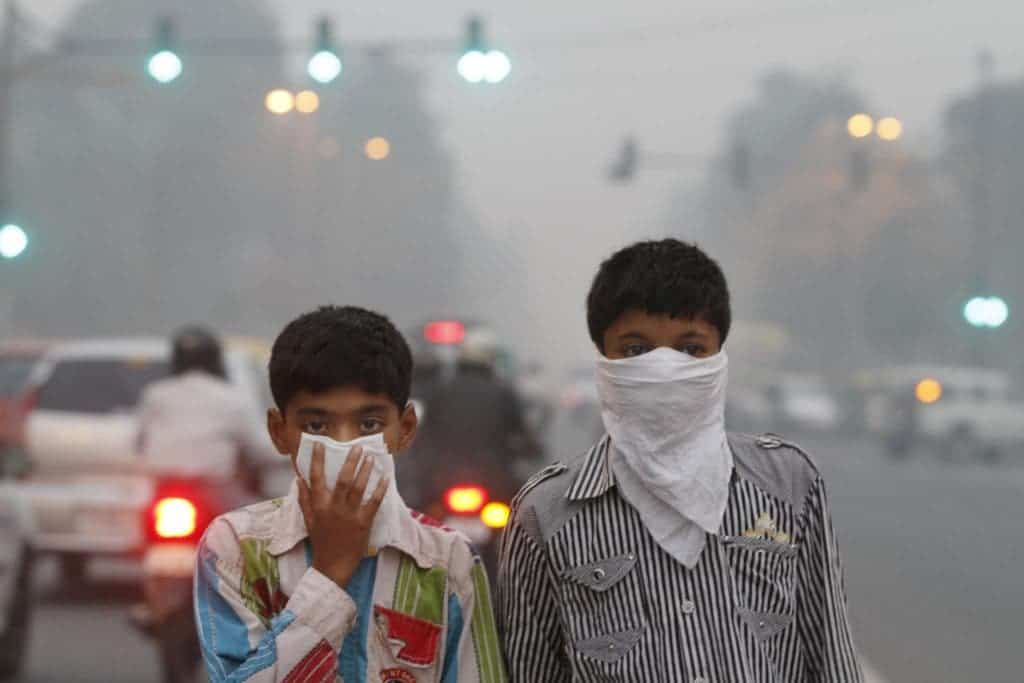The most detail study of its kind found air pollution is responsible 3.3 million premature deaths. Based on current trends of agricultural and industrial expansion, the study projects 6.6 million will succumb to soot and smog in 2050, or double today’s death toll. Most of these fatalities will be registered in developing nations like India, Pakistan and China.
This is an astounding number,” said Jos Lelieveld of the Max Planck Institute for Chemistry in Germany, who led the research. “In some counties air pollution is actually a leading cause of death, and in many countries it is a major issue.”

The team, comprised of researchers from Germany, Cyprus, Saudi Arabia and U.S., had to use various tricks to estimate air pollution death toll at a global level. That’s because 1) not all countries report air pollution deaths and 2) not all countries strictly monitor air quality. Furthermore, toxicity varies from source. So, the researchers combined a global chemistry model with stats on population health to estimate the relative contribution of different kinds of outdoor air pollution. Most of these fatalities were attributed to fine particle matter (under 10 microns in diameter) found in smoke and haze.
Exposure to such particles can affect both your lungs and your heart. The microscopic solids or liquid droplets are so small that they can get deep into the lungs and cause serious health problems. You can easily recognize if you’re living in an area with high risk of PM pollution if there’s always haze (reduced visibility). Its effects are not limited to cities only. Particles can be carried over long distances by wind and then settle on ground or water, even in national parks or secluded areas.
Smog engulfs Singapore as air pollution levels surpass “very unhealthy” levels http://t.co/DTJmMV95OW #SkyF1 pic.twitter.com/1E2WuSIzaj
— Sky Sports F1 (@SkySportsF1) September 14, 2015
The study, whose findings are similar to others, shows the extent of air pollution on the quality of life around the world. The effects and source of air pollution differ, however, from country to country. In India and China, the most air pollution related deaths can be tracked down to heating and cooking. In countries like the US, however, traffic and power generation are the main sources. Surprisingly, in Europe or Japan agriculture caused the most air pollution premature deaths.
“When most people think of outdoor air pollution, they tend to think of traffic and industry having the largest impact on global premature mortality, not residential energy emissions and agriculture,” Lelieveld notes.
Though farming doesn’t constantly spew fumes like a coal-fired power plant, its impact is significant since it’s widespread over large areas in any country. Fertilizers and animal waste contain ammonia which combines with sulfates from coal-fired power plants and nitrates from car exhaust forming the most dangerous air pollution particles. “We were very surprised, but in the end it makes sense,” Lelieveld said.
More key findings from the study published in the journal Nature:
- About 6 percent of all global deaths each year occur prematurely due to exposure to ambientair pollution. That’s higher than previously estimated not 10 years ago.
- In 2050, 6.6 million people are projected to die prematurely from air pollution.
- Air pollution kills more than HIV and malaria combined.
- China has the most air pollution fatalities numbering 1.4 million, followed by India with 645,000 and Pakistan with 110,000.
- In the US (2010), 54,905 fatalities were accounted to smog and soot. This ranks the country 7th on the air pollution fatality list.
- For industrial nations, farming takes a surprisingly large share of the soot and smog pollution. For instance, in the US, agriculture caused 16,221 of those deaths, second only to 16,929 deaths blamed on power plants. But in Europe, Russia, Japan and South Korea, agriculture was found to be the prime cause of the soot and smog deaths.
“Everybody breathes the ambient air, so it affects everyone, so even small risks can translate into major burdens of disease,” says Michael Jerrett from the Department of Environmental Health Sciences at the University of California, Los Angeles, in a commentary accompanying the published study.






